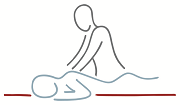Training
Successful training is all about managing change. The body you have today is the product of everything that has happened to you since you were born. What you have eaten and drunk, your activities, injuries, illnesses, work and play. This is because your body is constantly adapting to the stresses and strains put upon it. It is how we learn and grow, how we get stronger through training and weaker as we age.
Therefore, you can manage these adaptations to give yourself the body you want.
This is how training for Sports activities works. We slightly overload the body (muscles, heart, lungs) then rest. During the rest period our body grows stronger and “adapts” to be able to manage the heavier load. Then we do it again and again. Repeat and refine until we are fit enough to achieve the time, distance or speed that we want.
This is a very simple explanation.
Training plans are individual and depend on a number of factors including where you start from, how much time you have to train, what you want to achieve, your age and previous experience. They also need to adapt as you get fitter. A gradual increase in exercise intensity and volume is how we get stronger but it needs to be GRADUAL. Increasing too quickly or with too little rest between training sessions means the body will stop adapting as it becomes exhausted. This can lead to injuries, illness, difficulty sleeping and emotional issues. A good guide is to increase volume OR intensity by no more than 10% per week and not both at once. A training log is a good idea to help you manage this. Be particularly careful if you have to miss a couple of sessions through illness or “life” that you don’t jump forward too far to make up for them.
Overdoing it!
Pay attention to how your body is feeling, never ignore pain. Scale back your training and return gradually when pain has subsided. If you have recurring issues seek out a physical therapist to help you.
The main thing to remember is that your body is constantly managing change. If you want it to happen seamlessly then it needs to be gradual. Introduce new elements to your training with care. This could be anything from a new pair of trainers to a strength routine in the gym.
Slow And steady wins the day
Most musculoskeletal problems are cumulative. This applies equally to sports people and those that don’t train for anything in particular. Pain that started recently may not be caused by something that you did recently. This is because pain is a LATE indicator that something is wrong. By the time you feel the pain, your problem has very likely been developing for a while.
Therefore, months or years of performing the same tasks in the same way may, eventually, lead to painful symptoms. Clients often come to my clinic with shoulder and neck pain from working at a desk for years. Others have sports injuries from poor form or overuse. This is why I usually discuss your lifestyle and medical history with you when you come to see me. Things that happened a long time ago or keep re-occurring will have a bearing on your current symptoms and we need to work together to resolve them.
Please get in touch If you have any questions or need some advice.

